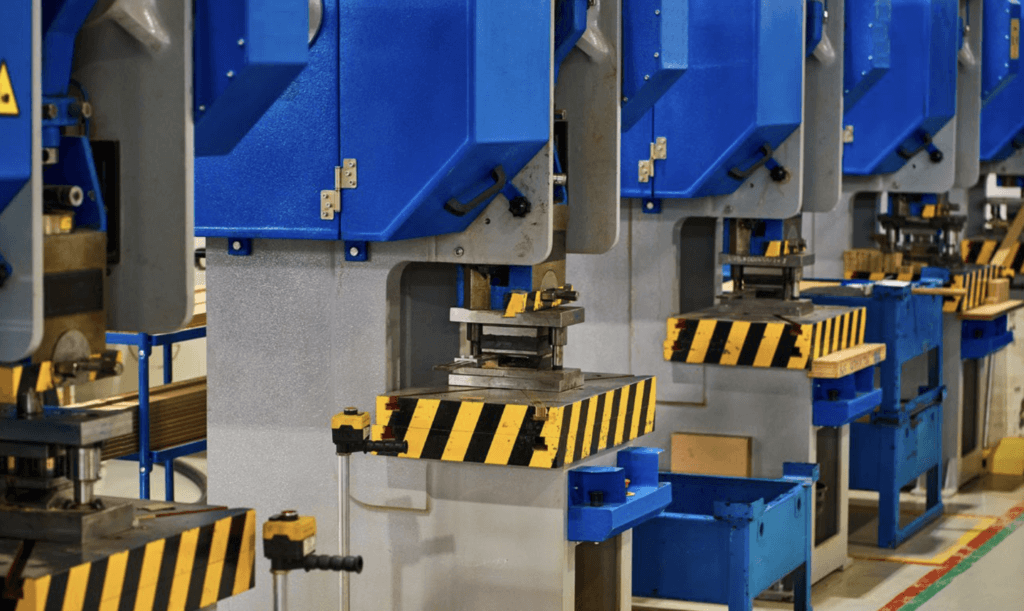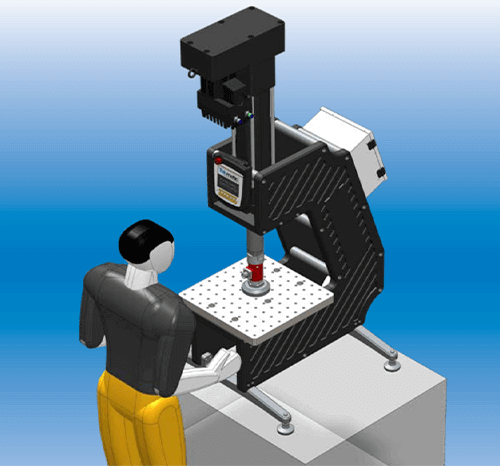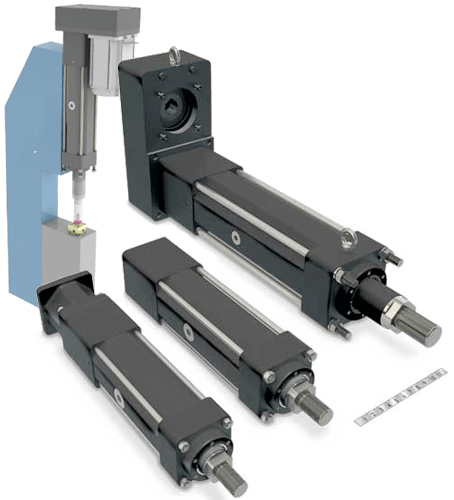Servo-Electric Presses Deliver Clean, Cost-Optimized and Precise Control in High-Force Applications
By John Fenske on April 16, 2024

While hydraulic presses have been the go-to choice in manufacturing applications for decades, they are rapidly being replaced by servo-electric linear presses that offer increased precision, control, energy efficiency and sustainability. Servo-electric presses were historically limited in some high-force applications best served by hydraulics, but innovative linear actuator designs have eliminated many of these limitations.
In our two-part series of blog posts, we’ll take a deep dive into servo-electric presses. We’ll provide an overview of their operational benefits and look closely at how linear servo press designs that use roller screws are enabling high-force applications.
Implementing servo-electric presses offers a number of performance benefits.
- Control. Servo-electric presses enable complex, real-time motion control, leading to better positioning and repeatability compared to hydraulic presses.
- Programmability. Thanks to their servo motors and control systems, servo-electric presses can perform complex motion profiles that support programmable ram forces, speeds and strokes.
- Cost. Servo-electric presses achieve their elevated performance with fewer mechanical components, reducing maintenance and increasing uptime.
- Consistency. Motion profiles boost repeatability and consistency, in turn contributing to better part quality, higher yields and reduced waste on the shop floor.
- Sound. Because there are no pumps and valves, a servo-electric press is much quieter during operation.
- Efficiency. Servo-electric press designs are much more energy efficient than hydraulic presses and contribute to an overall lower cost of ownership. A recent article even reported that hydraulic actuators used 4.4 times more energy than electromechanical actuators.
- Sustainability. Because servo-electric presses consume less energy, they reduce carbon emissions and support sustainable industry practices. And with the absence of hydraulic fluids, electric presses eliminate the possibility of fluid leaks, material contamination and environmental impact.

Electric press technologies are built for modern industry.
- Industrial automation. Servo-electric presses enable easy integration into automated industrial systems and communications protocols, boosting an operation’s automation capacity.
- Industry 4.0. Data-driven industrial applications can leverage captured machine data for monitoring, analytics, process optimization and even predictive maintenance strategies.
- Safety compliance. Servo-electric presses seamlessly integrate with advanced operator safety technologies.

Direct-Drive Designs Further Boost Performance
We can categorize servo-electric presses into two distinct technologies: servo-mechanical and linear servo. Linear servo presses take the benefits mentioned above a step further because they incorporate a direct-drive linear actuator in place of mechanical systems like flywheels or crankshafts. The linear servo design eliminates rotary-to-linear force transmission and allows servo motor power to solely generate direct linear thrust.
The direct-drive approach also improves positioning precision and speed control compared to servo-mechanical designs. Omitting rotary mechanical components consolidates space, enabling more compact press designs. And, because they use ball or roller screw mechanisms, linear servo presses deliver higher press forces, tonnage capacities and stroke speeds, among other advantages.
Learn More
By design, linear servo presses match the high forces of similarly sized hydraulic machines while offering advantages like greater precision, speed and flexibility. While both ball screw and roller screw designs enhance the performance of linear servo presses, roller screws particularly excel at high-force applications.
Stay tuned to find out why, and read our white paper to learn more.

 Ask an Engineer
Ask an Engineer